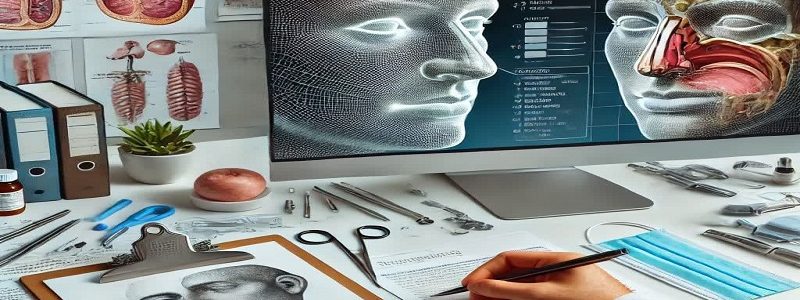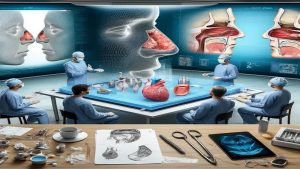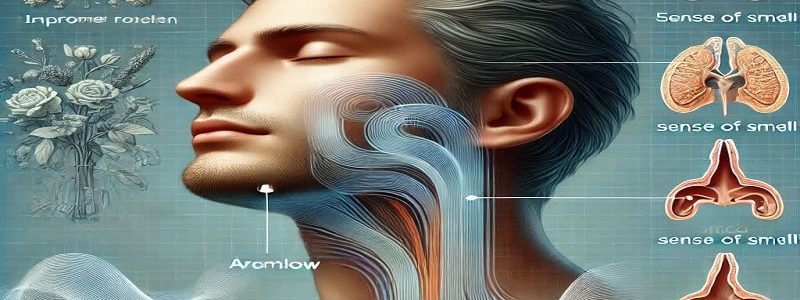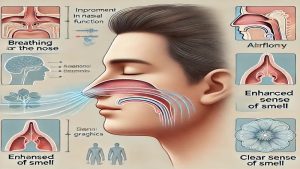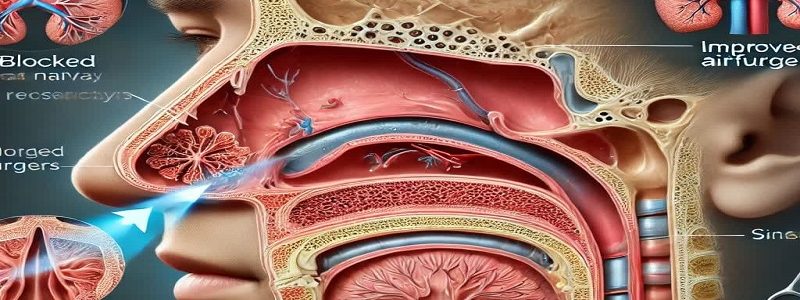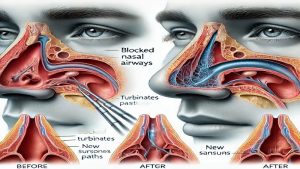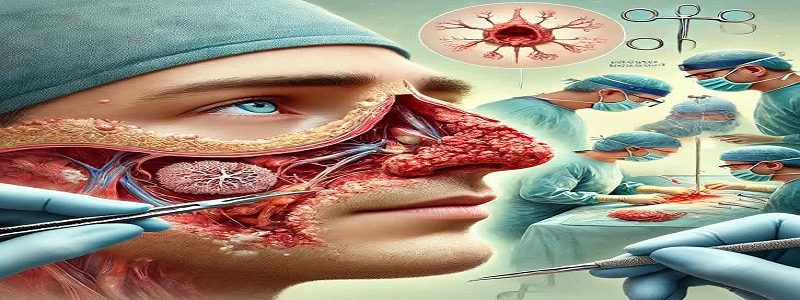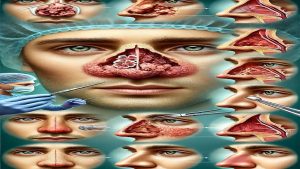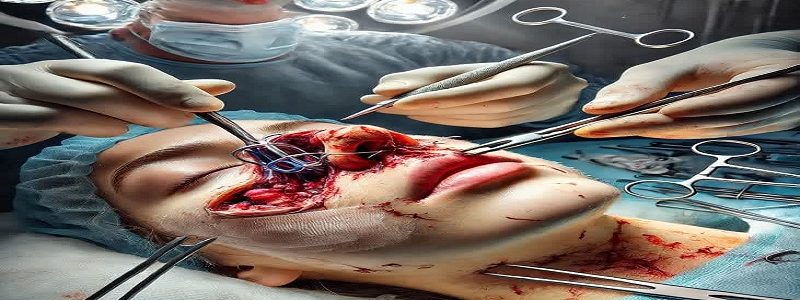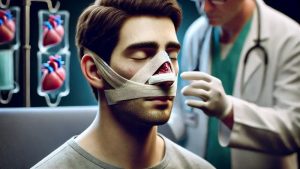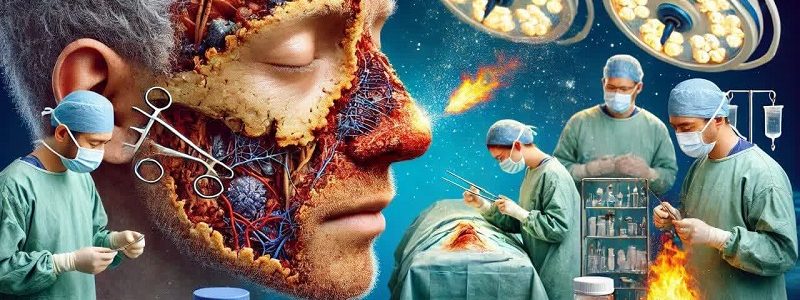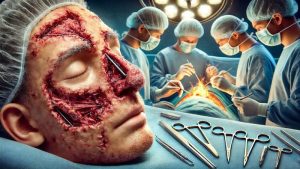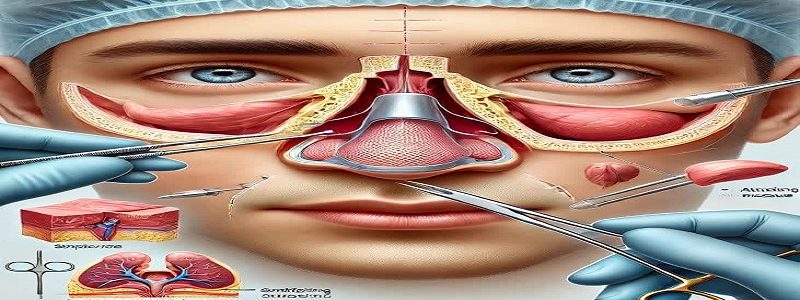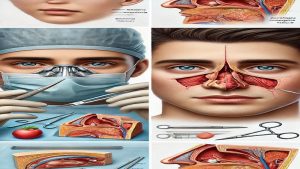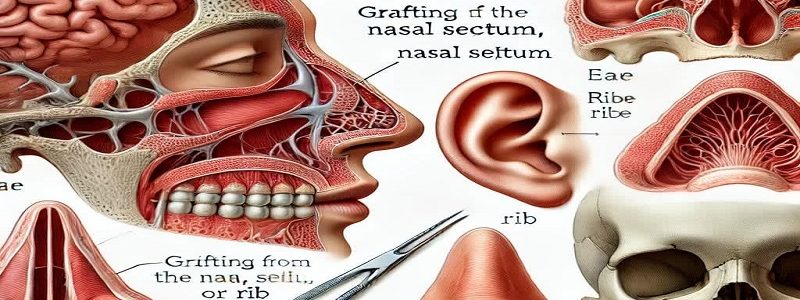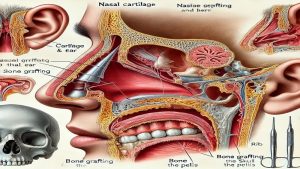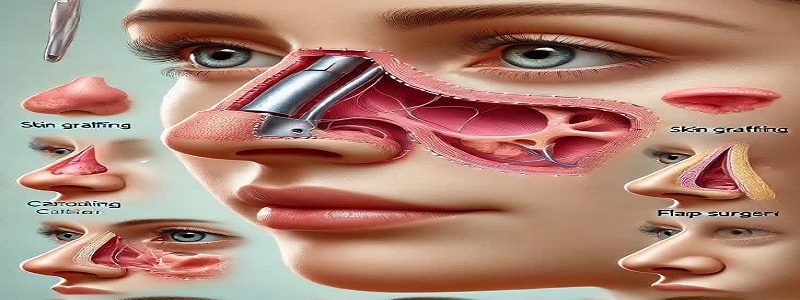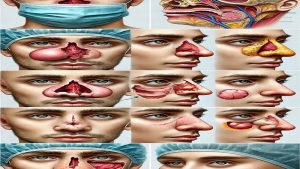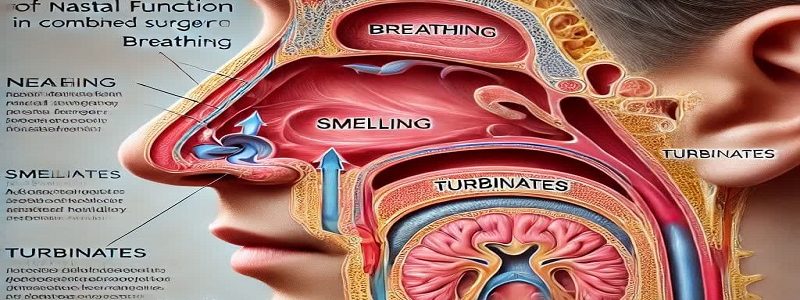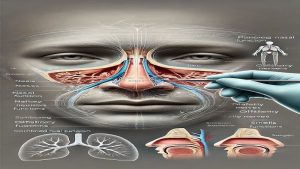Comprehensive and complete review
Introduction
Nasal reconstruction is one of the most sophisticated and delicate plastic and restorative surgeries. The nose is of particular importance because of the central position in the face and the vital role in the respiratory function and appearance.. In cases where the person has a deformation or defect in the nose due to accidents, cancer, previous surgeries, or congenital abnormalities, nasal regeneration becomes a complex and multi -stage process.. This process requires careful planning and step -by -step implementation to improve both respiratory function and nasal beauty..
In this article from the site of Dr. Behnam Khorrami (Isfahan nose surgeon _ Jaw surgeon of Isfahan), The importance of careful planning in nose reconstruction, the various stages of this process, the challenges ahead, and the expected results are discussed..
The importance of careful planning in nose reconstruction
1.. The complexity of the nasal structure
The nose consists of a variety of components, including bone, cartilage, skin and soft tissue, each playing a distinct role in respiratory function and nasal appearance.. Successful nasal reconstruction requires a balance between these components. For this reason, any modification or change in these structures must be done with care and elegance.
2.. Need to rebuild functional and aesthetics
The purpose of nasal reconstruction is not only to correct its appearance, but also to improve respiratory function. انسداد مسیرهای هوایی، ناهنجاریهای Septum (سپتوم), Or problems in nasal valves must be carefully examined and modified. This requires a deep understanding of the nose anatomy and the choice of appropriate surgical techniques.
۳. Stages required
In many cases, nose reconstruction is not possible at one stage. Especially in cases where tissue transplantation, cartilage correction, or skin regeneration, surgery is essential in several stages.. Each step should be aimed at preparing the conditions for the next step and minimizing the risk of tolls..
Different stages of nose planning and reconstruction
first stage: Initial assessment and treatment planning
Initially, the surgeon evaluates the patient's nose structurally and functionally using different methods.. This assessment includes the following:
Clinical examination: ارزیابی وضعیت تیغه بینی، دریچههای بینی، Cartilages و پوست
Medical imaging: CT scan use (CT) And MRI (MRI) To check the internal status of the nose
3D modeling: Design of digital model of nose to simulate surgical results and predict potential problems
Patient consultation: Transparent patients' goals and expectations of surgical outcome
second stage: Tissue preparation and nasal structure
At this point, focusing on improving tissue status and modifying basic nasal structures. This step may include the following:
Tissue harvest: In the event of a deficiency of cartilage or skin, it may need to be removed from other parts of the body (such as ears or ribs) ..
Improving skin conditions: In cases where the skin is damaged or thin, reinforcement treatments such as skin transplantation or artificial tissue are performed..
Nosebleeds and cartilage: The surgeon may adjust or regenerate nasal cartilage to improve the respiratory path.
third level: Reconstruction of the nose structure
At this point, the structural reconstruction of the nose is done to restore its natural appearance and function.. Techniques used include:
Rather, it is enlarging the nose by creating a bridge over the nose: Use of ear cartilage, ribs or nasal blades to create strength and formation
Creating symmetry: Precise adjustment of the nose blade and nose tip to create balance and appearance
Skin regeneration: In the event of serious injury, skin transplantation is done from other parts of the body.
The fourth stage: Reform and Completion of Reconstruction
Occasionally, after initial surgery, problems such as asymmetric or respiratory obstruction remain that need to be corrected. This step is usually performed 2 to 6 months after initial surgery. Reforms may include:
Adjusting nasal valves to improve airflow
correction Tip of the nose برای بهبود فرم و تقارن
Injection of fat or skin fillers to improve volume and symmetry
Challenges of nose reconstruction
1.. Tissue constraints
In cases where the patient does not have enough tissue to reconstruct (For example, after a severe injury), There is a need to use artificial tissue or tissue removal from other parts of the body.
2.. Nymph
Nose reconstruction due to the use of transplanted tissues, with the risk of necrosis (Tissue death) Or infection associated with. Observing sterile surgical techniques and post -surgical care techniques reduces these risks.
۳. Functional problems
گاهی پس از بازسازی، مشکلاتی مانند Nasal obstruction، تغییر در حس بویایی یا ناراحتی هنگام تنفس ممکن است رخ دهد که نیاز به مداخله اصلاحی دارد.
Post -nose recreation care
1.. Wound care
Use of antibiotics ointments
Avoid nose manipulation
Use special dressings to reduce swelling
2.. Swelling and bruising
Use a cold compress
Sleep
Avoid heavy activities for 1 to 2 weeks
۳. Regular follow-ups
Regular examinations with the surgeon are essential to evaluate the performance and appearance of the nose. In case of problems, corrective surgeries may be recommended.
Expected results
Successful reconstruction of the nose leading to:
Improve respiratory function
Correction of appearance anomalies
Restore patient self -esteem
Improve the quality of life
summary
Nose reconstruction is a complex, multi -step process that requires careful planning, step -by -step implementation, and regular follow -up.. Success in this process depends on the experience and skill of the surgeon, post -operative care and patient patience. Achieving a natural and proportionate effect on the face anatomy is the ultimate goal in nasal reconstruction.
Useful links:
Isfahan nose surgeon _ Jaw surgeon of Isfahan
Dr. Behnam Khorrami's page in the clinic 24 | Maxillofacial surgeon in Isfahan clinic 24 | Nose surgeon in Isfahan clinic 24
Dr. Behnam Khorrami, nose surgeon in Isfahan at Dr. Af | Maxillofacial surgeon in Isfahan at Dr. Af | Isfahan nose surgeon at Dr. Af
